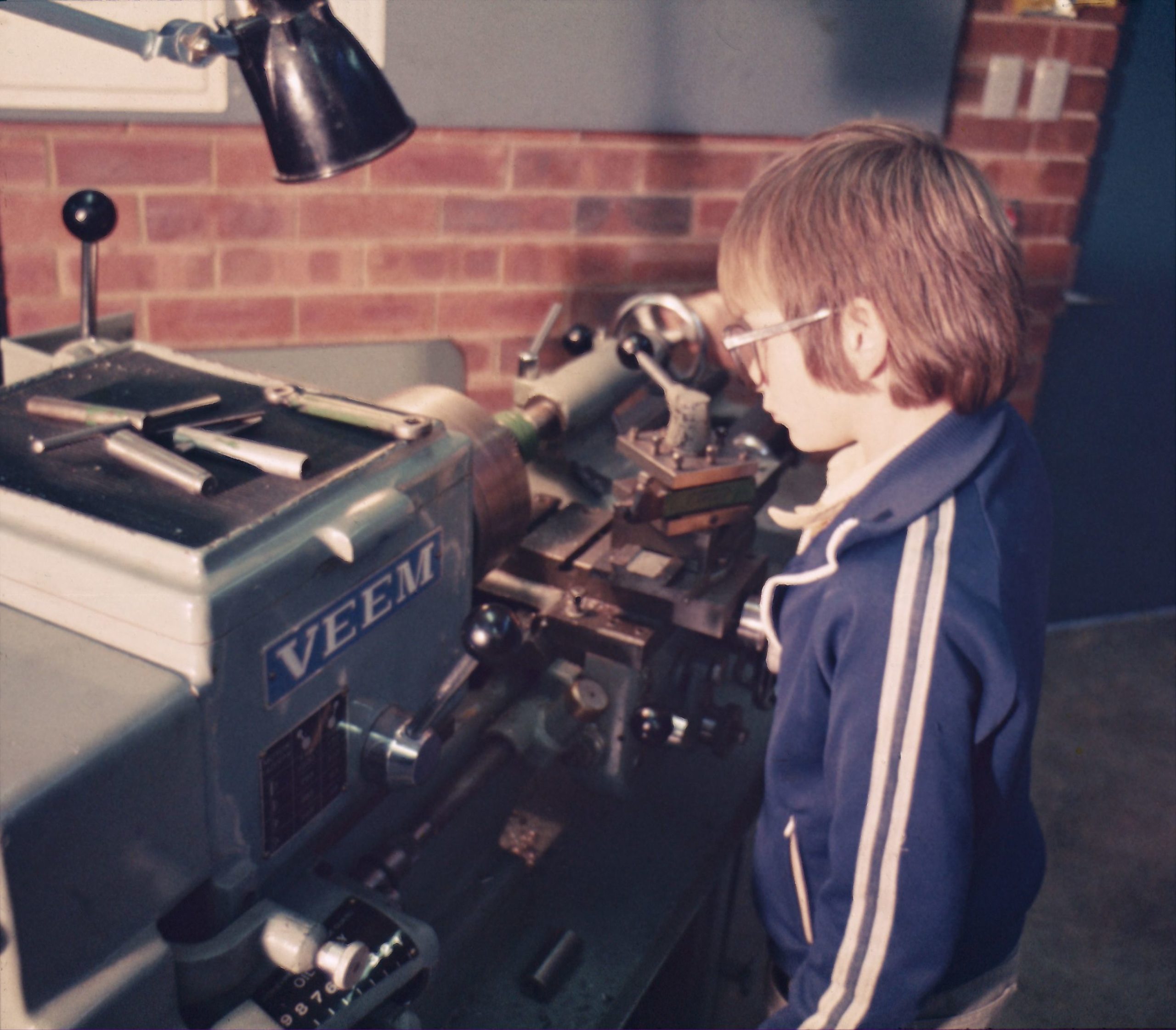The Lathe is just one example of VEEM’s innovation and precise manufacturing throughout history. Heavy Duty lathes are an essential piece of equipment for workshops, tool rooms, class rooms and other production work, however, prior to 1975, there was no heavy duty factory-scale production of lathes in Western Australia.
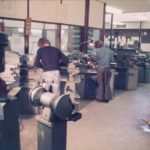
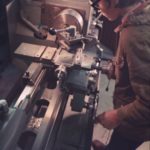
Students using VEEM lathes at Carine Tech
When VEEM began manufacturing lathes, the company was run by Charlie Miocevich, the original founder, and had a work force of 26. At the time, VEEM specialised in dynamic balancing and precision engineering, including tail-shafts and precision turbines, shop turbines and dust extractor fans.
Prior to VEEM’s production of the Mark 3M lathe in 1975, the Mk. 3 light duty Premo lathe was being manufactured by Tulloch Ltd in New South Wales. Tulloch began manufacturing the Mk. 3 Premo lathe in the early 1960’s, however, ceased trading in 1974 and sold the drawings, rights, and patterns to a family associate Mauri Yelsich, who later passed them onto Charlie.
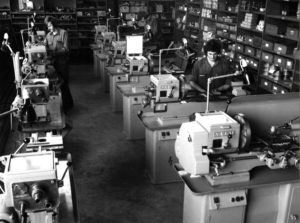
A batch of VEEM lathes at final stage of production in Willetton
With the introduction of Metrication in Australia 1971, the Mk. 3 Premo design was in need of an update to meet the demands of the WA market, so Charlie began a number of improvements to the design before beginning production of the Mk IV MVEEM Lathe in 1975. A geared head headstock was incorporated along with a general modernization of the major components.
To cater for the production of Lathes, VEEM purchased a Jig Mill from DeVlieg of Scotland, which produced the bed, headstock, saddle and the tailstock of the VEEM Mk 3M. The DeVlieg Jig Mill is still operational at VEEM today and is used to manually mill a wide variety of products almost every day.
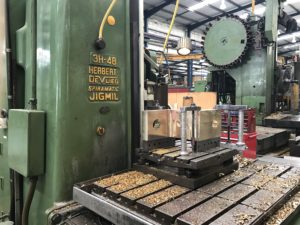
De Vlieg is still operational at VEEM today
VEEM also invested in two Capstan production lathes, a Herbert and a Ward, to manufacture the smaller components of the Mk. 3M lathe.Other parts of the Mk. 3M were cast externally using wooden patterns and assembled at VEEM.
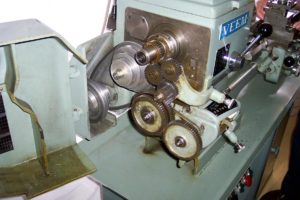
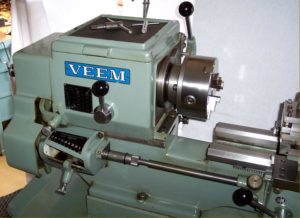
The VEEM Mk. 3M.
After months of planning, modifications, and machining, the VEEM Mk.3M was in full production by 1975. Retailing at around $3,000, the VEEM Lathe was sold to various groups around WA, including the education department who received their first lathe on the 10th of February 1976, unfortunately the same day VEEM founder, Charlie Miocevich passed away.
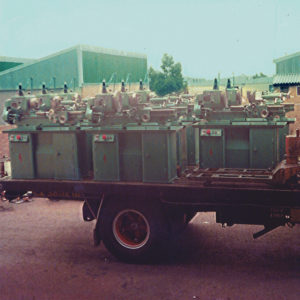
VEEM Mk. 3M Lathes on route for delivery
Production continued and in 1978 the Mk. 3M design was modified specifically for the education department to feature 6 speeds. VEEM hosted a local competition in the factory to come up with the design for a multi-speed lathe and approximately 30 of these units were purchased.
By the early 1980’s VEEM had sold over 180 lathes throughout Western Australia and the running of the company was taken over by Charlie’s sons: Gary, Mark, and Brad Miocevich. The company began taking on more oil and gas and defence work and with the changing world through cheap imports, eventually disbanded the production of lathes.
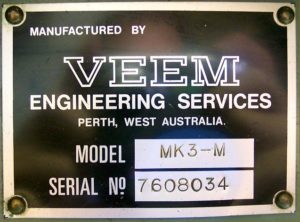
A Mk. 3M Veem data plate indicating manufacture during 1976
VEEM offered the drawings, patterns, and designs of the VEEM Mk. 3M lathe to the education department to provide a meaningful apprentice project and a spares source for industry. Unfortunately this was not taken up and the patterns were destroyed.
VEEM continues its rich history of innovation and precise manufacturing to this day, continuing to offer advanced engineering services across the globe as well as developing world ground breaking marine technology.

